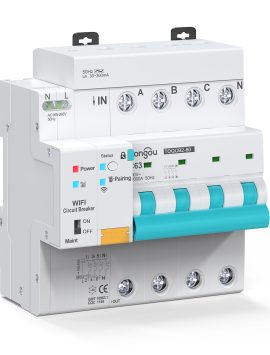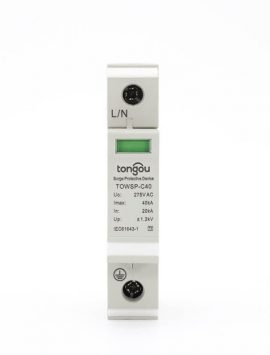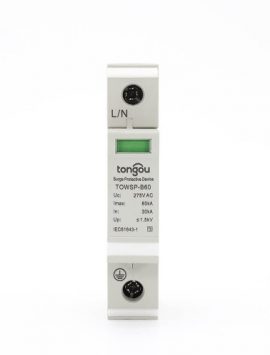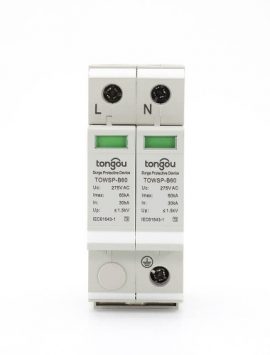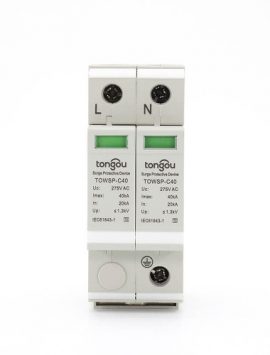The applications of an SPD
SPD protects the lightning power supply system of the leading electricity network against the direct current (DC) abnormally high voltage or voltage surge. The SPD is made up of disconnecting switches, a circuit breaker, the surge protective device (SPD), and an overload relay box.
Furthermore, these surge protectors are a cost-effective way to save downtime, increase system and data reliability, and reduce apparatus damage caused by transients and surges in power and signal lines. The surge protection device can be used in any facility or load (1000 volts and below).
Surge arrestors also serve a variety of purposes, and they can be used anywhere from a home to a utility substation. This device is installed on circuit breakers, pad-mounted transformers, pole-mounted transformers, pole-mounted riser poles, and substations by an electrician.
How does the SPD work?
Most straightforwardly, a surge protective device interrupts the current path when a transient voltage occurs on the protected circuit, limits the transient voltage, and diverts the current back to the ground or its source by closing its switch contacts. This prevents voltage transients from causing damage to linked equipment.
At least one non-linear component is required in the surge prevention device. It switches between a high and low impedance state under various conditions to function.
The surge prevention device is in a high-impedance condition at standard operating voltages and does not affect the system. When a transient voltage develops on the circuit, the surge protective device enters a conduction state (low impedance).
It diverts the surge current back to its source or ground, just as the nominal discharge current. The voltage is then limited or clamped to a safer level. After the transient diverts, the surge protection device immediately resets its high-impedance configuration.
The commercial, industrial, and residential applications of SPD
- Control cabinets,
- Programmable logic controllers,
- Power distributions,
- Electronic motor controllers,
- Metering,
- Lighting circuits,
- Critical loads,
- Medical equipment,
- Equipment monitoring,
- Back-up power,
- HVAC equipment,
- Cable TV feeds,
- Telephone of facsimile lines,
- UPS,
- Communication circuits,
- Kitchen or household appliances,
- Alarm signaling circuits,
- Security systems,
- Entertainment center or stereo equipment.
How to install an SPD?
- Place the SPD as close as possible to the panel to be protected,
- Drill and punch a hole in the surge protective device housing in an extremely high position to shorten the length of the connecting wires from the surge protective device’s lugs to the next panel’s circuit breaker (or fused disconnect lugs).
- Then, use a close-nippled connection with wires going on to the first breaker at the top of a panel wherever possible. The use of a close-nippled connection with wires continuing on to the first breaker at the top of a panel ensures that all loads connected to the panel are adequately protected.
- Connect the surge protector and the breaker panel with AWG #10 stranded wire or larger (which is commonly available and easy to install). Within the wiring, avoid sharp bends and unnecessary length. Installations that are neat aren’t always the most successful ones. The best connections are the short and direct ones.
- Finally, connect the surge protector to a suitably rated circuit breaker rather than the panel’s main lugs. When circuit breakers are unavailable or unsuitable, the electrician should utilize a fused disconnect switch to connect the lines and permit surge protective device servicing.
What are the differences between a surge protector and a surge arrestor?
The surge arrestor is one of the most important components of any electrical system. It assists in the protection of expensive circuit components by diverting overvoltage surges to the ground or another safe location, preventing them from reaching linked equipment. Surge protectors, on the other hand, Surge protectors are electrical devices that guard against power surges.
Power surges are abrupt voltage shifts or transient increases in the voltage delivered by a power source. Surges can be caused by both non-malfunctioning (often wrongly fitted) and faulty equipment. A surge protector protects the system from such surges while also extending the life of the electronic components.
Surge arrestors (also known as lightning arrestors) safeguard electrical equipment from over-voltage conditions in the same way that surge protectors do. Furthermore, they are both referred to as SPDs (Surge Protection Devices). The scale of the protection, on the other hand, differs between the two. The surge arrestor is for large-scale protection (mid to high voltage), whereas the surge protector is for small-scale protection (low voltage). A surge protector might be appliance-specific, such as for washing machines and refrigerators, or it can be a whole-house surge protector.
Surge arrestors (also known as lightning arrestors) are used by utility companies to protect their electronic equipment and infrastructure in power transmission and distribution networks. Such devices are also used in large-scale industrial operations, such as mining or oil and gas. Large fault currents, such as those created by lightning, are protected by these devices, hence the name “lightning arrestor.”
A surge protector is a device that protects the home and consumer electrical devices from power surges. The surge protector protects your computer, television, and refrigerator, as well as other sensitive electrical devices and appliances in your home.


